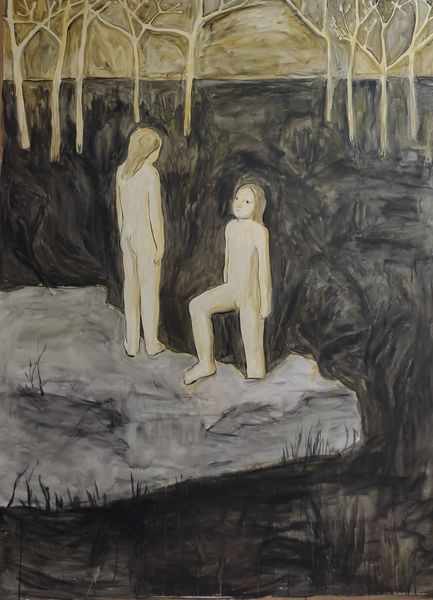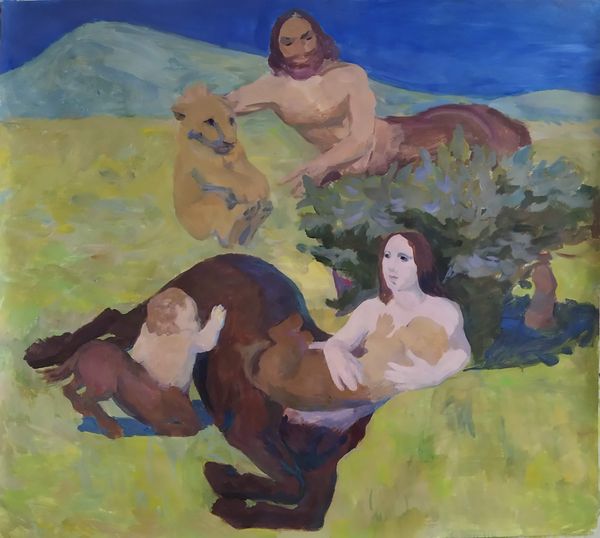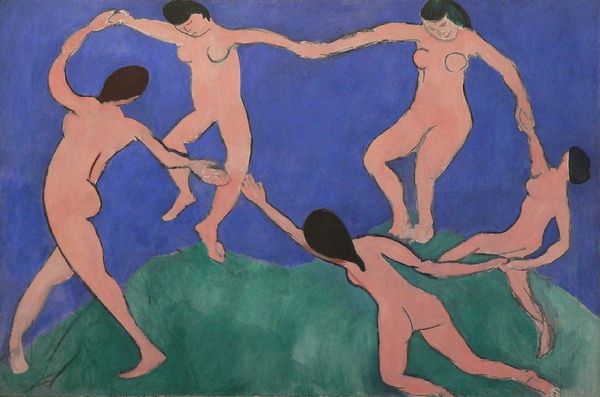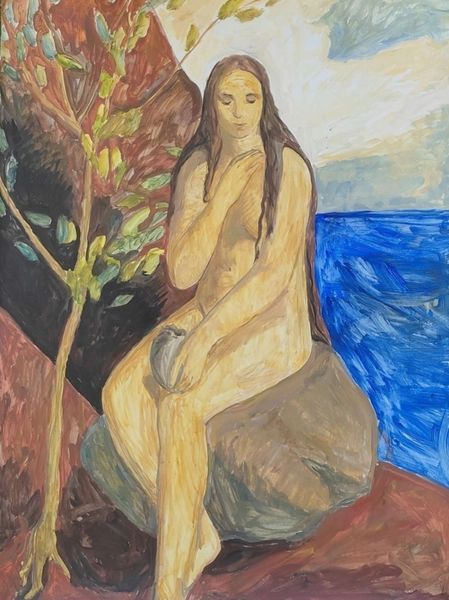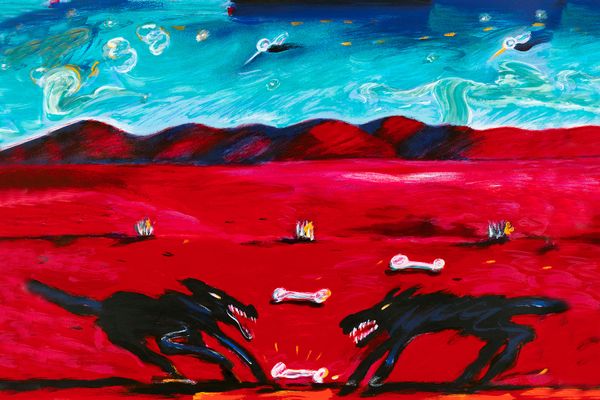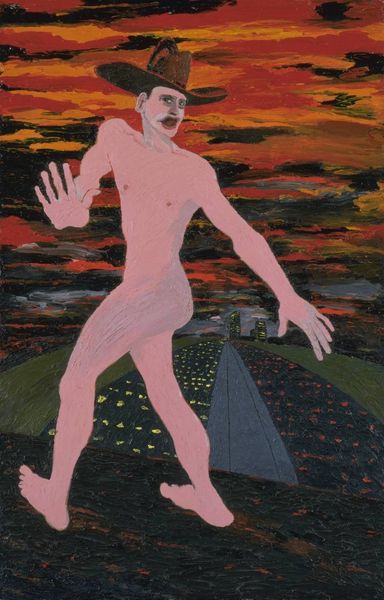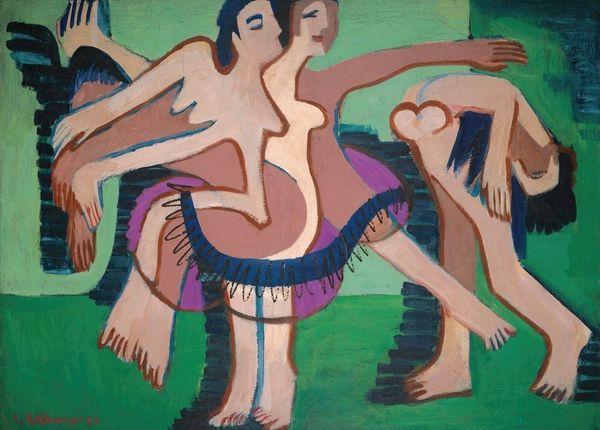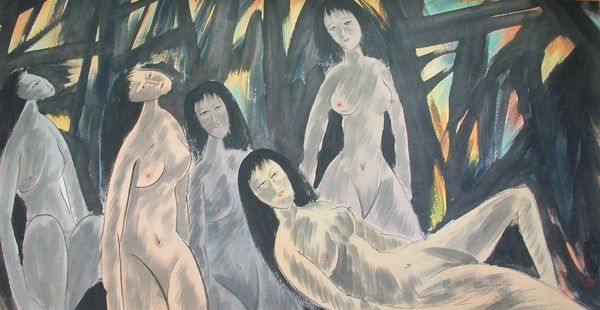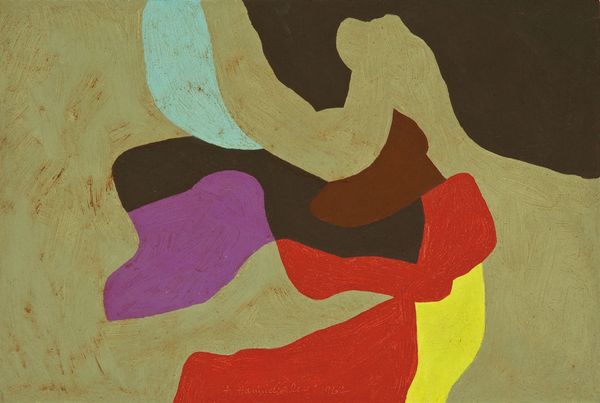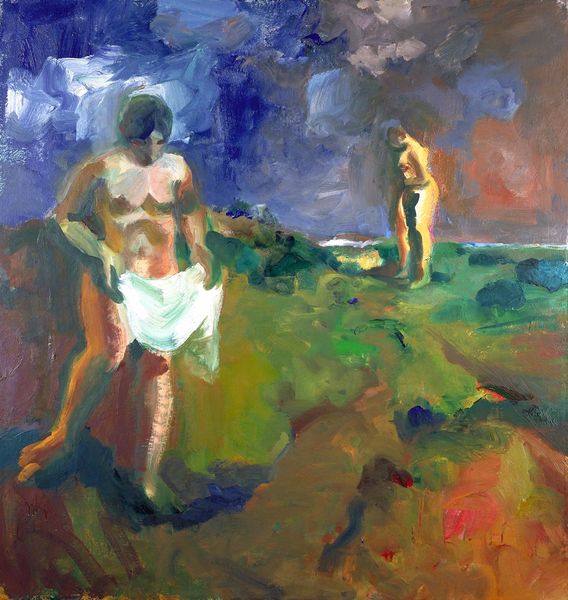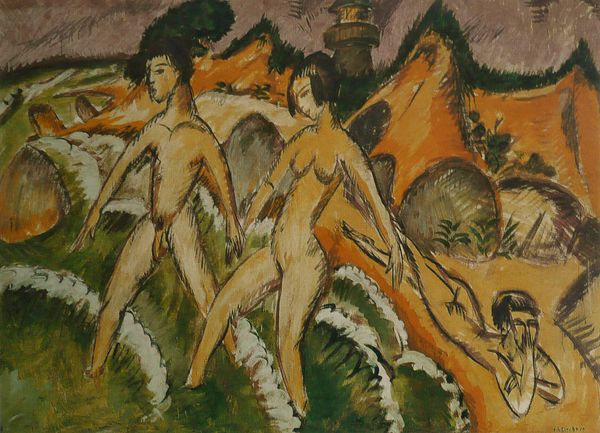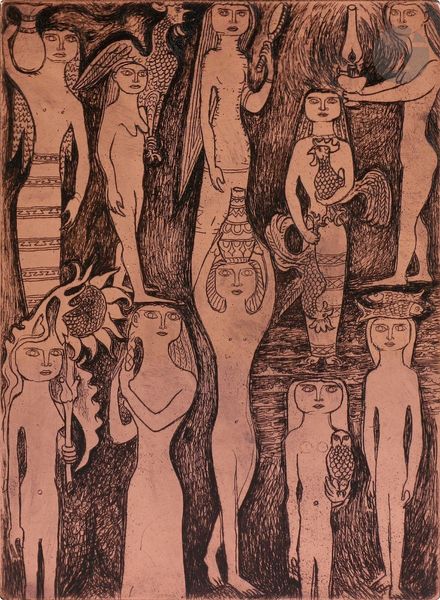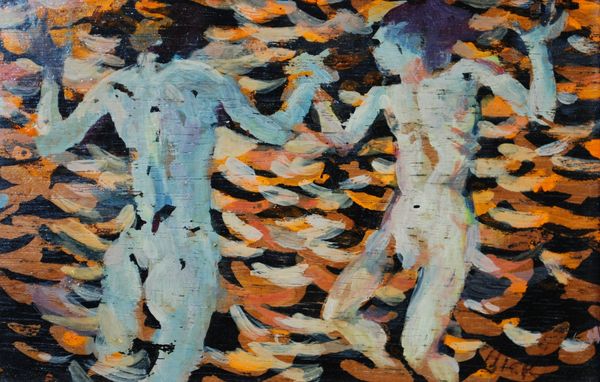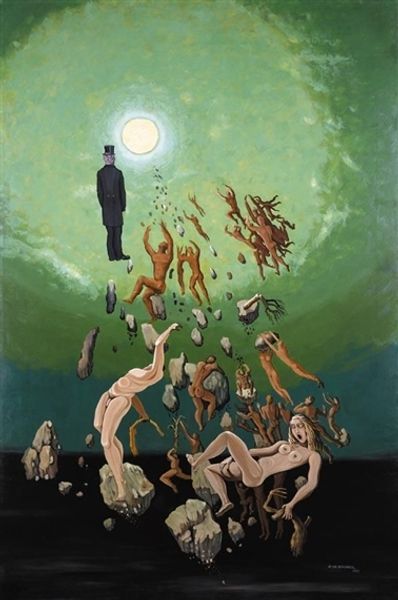
Copyright: Kateryna Lysovenko,Fair Use
Curator: Kateryna Lysovenko's arresting painting from 2022, done in acrylic and oil, greets us with its intriguing figures. The title, "I Refuse to Live on the World Which Reproduces Collective Graves," gives us quite a bit to ponder before we even look closely, doesn’t it? Editor: Absolutely! My initial impression is one of unease mixed with mythology, or perhaps a corrupted version of it. There’s this almost childlike simplicity to the figures, yet the subject feels heavy, almost apocalyptic. It makes you question the narrative. Curator: Yes, there's definitely a deliberate primitivism in the style, a rawness that amplifies the painting's emotional impact. Those figures... the hybridity is striking. Are they warnings? Lost souls? Each looks oddly detached, and placed somewhat randomly in a desolate landscape. It reminds me, in some ways, of a theatrical stage where no real drama is actually performed. Editor: That detachment is chilling. They seem both present and absent. I’m intrigued by the reddish-brown earth contrasted against the narrow strip of stark blue sky. The earth looks almost like rust. The sky almost feels like an afterthought... is this symbolizing a kind of lost hope? Curator: I interpret that use of the sky similarly. The composition, dominated by earth, hints at confinement, while the blue becomes a distant, unreachable ideal. Considering the title, this could be seen as a conscious commentary on societal structures that perpetuate violence and trauma. Editor: So you're suggesting these mythical creatures embody victims of some sort of systemic ill? Curator: Potentially. They might represent those forced to exist within a flawed world. Lysovenko doesn't offer easy answers, and that is her painting's real strength: the power to initiate a very private search within yourself. She offers visual metaphors; it's up to us to figure out what it is *we're* searching for. Editor: Right. This isn't a painting that hands you meaning on a silver platter. The refusal in the title, I think, serves as both an indictment and an aspiration, prompting viewers to critically examine their own roles within larger socio-political landscapes. And it’s an expressionist act of the first degree. It invites viewers to dwell in that space between desolation and a fragile hope. Curator: I think I concur wholeheartedly, even as I'm left unsettled... in the best possible way! Thank you for that excellent insight! Editor: My pleasure, it was really helpful in crystallizing my impressions, thank you!
Comments
No comments
Be the first to comment and join the conversation on the ultimate creative platform.
